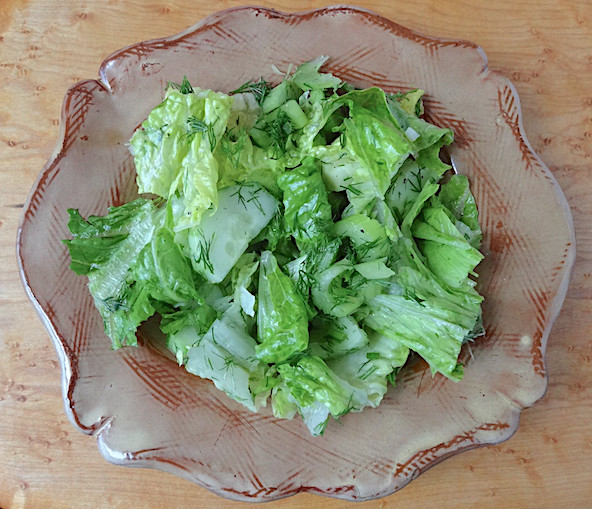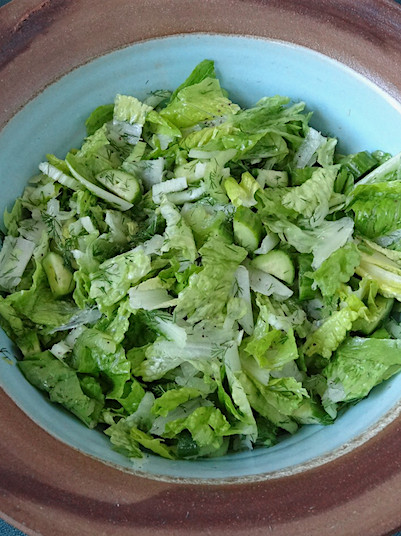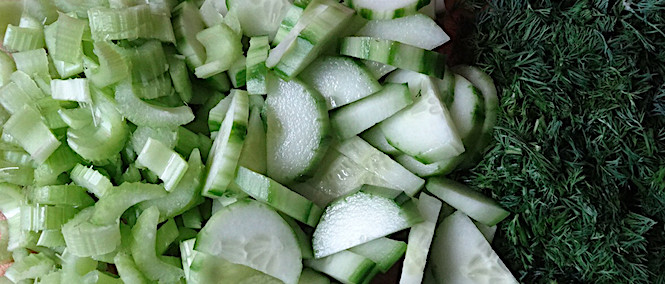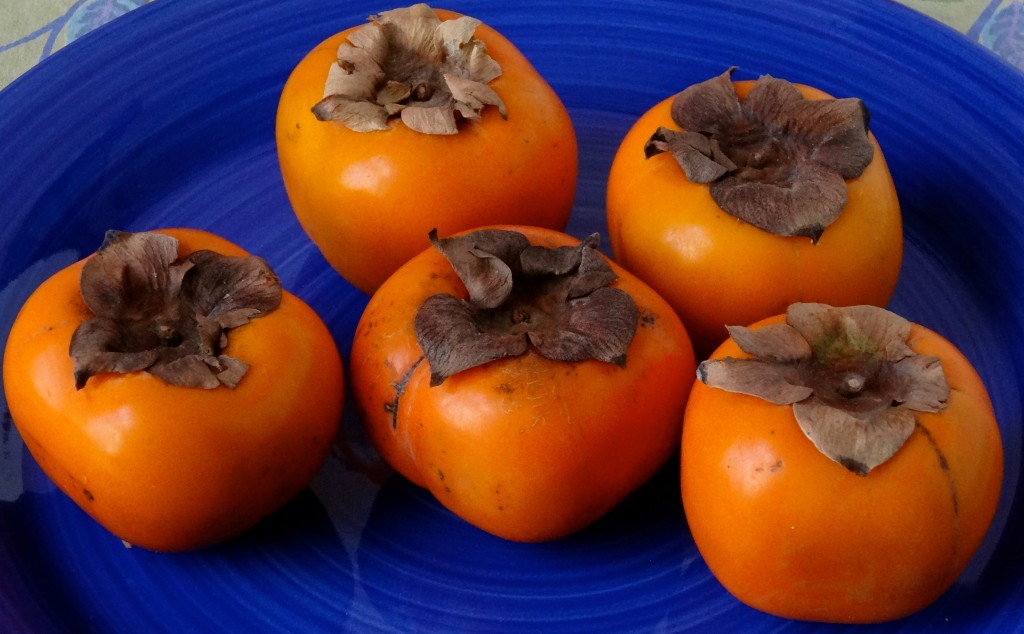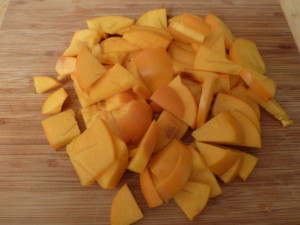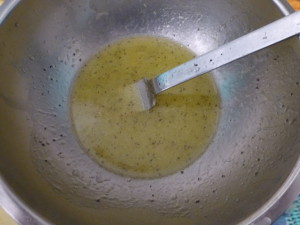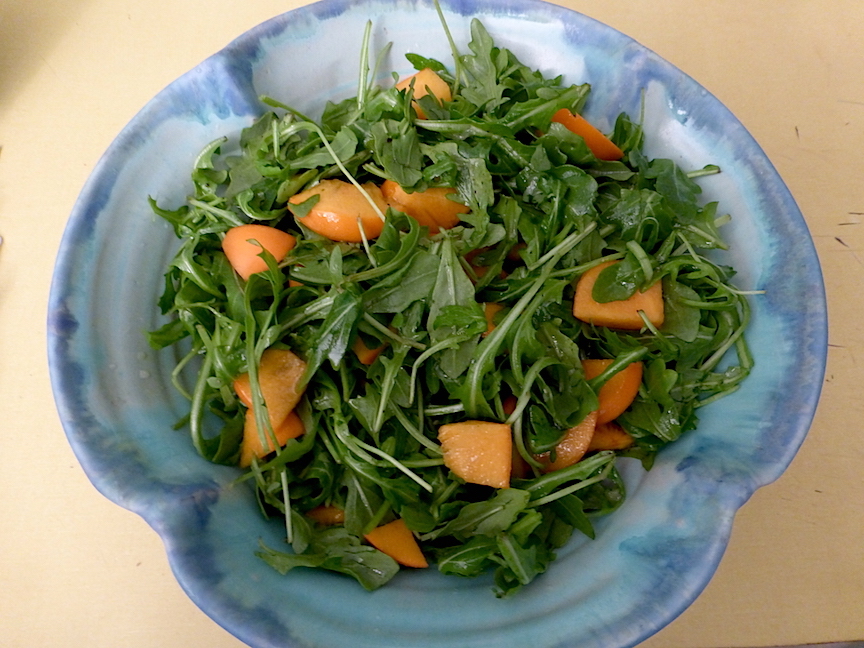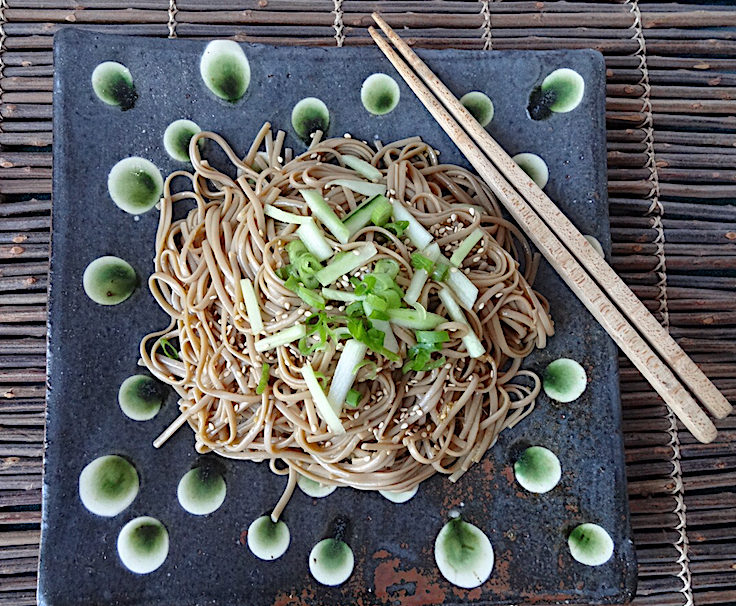
plate by Michael Hunt & Naomi Dalglish
Traditional soba can be very simple – just cooked noodles, cold or warm, served with a dipping sauce. It is found all over Japan in soup, as a salad or with a thick sauce. In New York, we are just learning its culinary range as soba follows ramen as the new, trendy star in soba-centric restaurants and as making your own soba noodles outmodes preparing homemade pasta. A soba dipping sauce or soup base is often dashi, a broth made from seaweed and sometimes bonito (fish) flakes with soy sauce and may be fortified with vinegar, sugar, sesame oil, mushrooms or daikon.
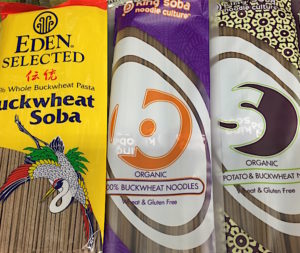 I rarely have the patience to prepare dashi properly so I have a shorthand method for making soba. My sauce recipe (below) is similar to a savory salad dressing, in which you toss the cooked noodles. Soba noodles are made from buckwheat (which is gluten-free as it is actually a seed and not a grain) often with added wheat flour (because it contains gluten) to make the pasta less fragile. I prefer 100% buckwheat or buckwheat combined
I rarely have the patience to prepare dashi properly so I have a shorthand method for making soba. My sauce recipe (below) is similar to a savory salad dressing, in which you toss the cooked noodles. Soba noodles are made from buckwheat (which is gluten-free as it is actually a seed and not a grain) often with added wheat flour (because it contains gluten) to make the pasta less fragile. I prefer 100% buckwheat or buckwheat combined 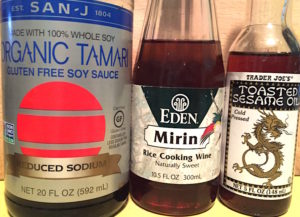 with sweet potato or wild yam (King Soba and Eden are two reliable brands). Why not exclude some wheat when it is easy and tasty? If you don’t care about gluten, any soba noodle will do. The noodles cook very quickly so please pay attention to cooking time and to rinsing with cold water, which is essential to stop the cooking process. You want to retain a firm texture rather than letting them turn to mush, which can happen quickly, so watch and test before you think they might be done.
with sweet potato or wild yam (King Soba and Eden are two reliable brands). Why not exclude some wheat when it is easy and tasty? If you don’t care about gluten, any soba noodle will do. The noodles cook very quickly so please pay attention to cooking time and to rinsing with cold water, which is essential to stop the cooking process. You want to retain a firm texture rather than letting them turn to mush, which can happen quickly, so watch and test before you think they might be done.
Because this recipe is delicious cold or at room temperature, it may be prepared in the morning or the night before and refrigerated until dinner, especially helpful when you don’t want to cook in the heat of a summer day. It is good as a side dish to fish, served with a green vegetable like watercress or broccoli or holds its own as a main course with added tofu or tempeh (easy enough to make but if you are strapped for time, use a package of marinated – Nu Tofu makes a good one) plus a green vegetable. Leftovers hold up very well in a lunchbox and work well for a picnic.
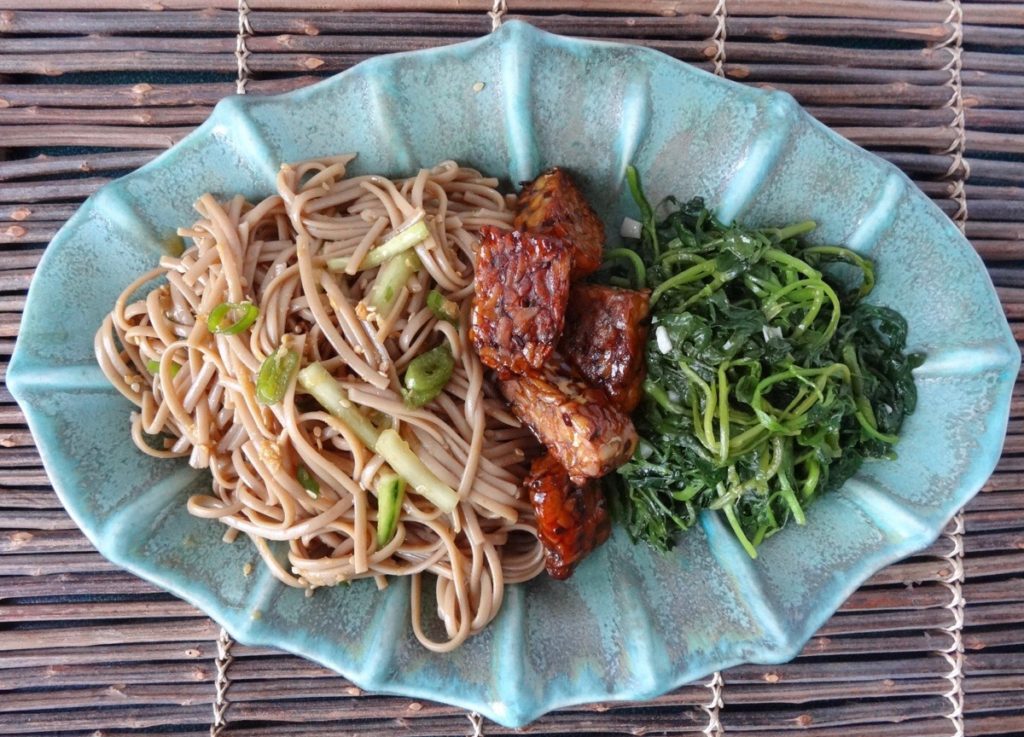
TOSSED SOBA
- One 8 oz package of soba noodles
- One strip of kombu/kelp
Bring a large pot of water (3-4 quarts) to a boil. Add the dry kombu (seaweed) and boil 3-4 minutes. Add the unwrapped soba and stir to break the starch bonds, as when preparing any pasta. Cook, stirring occasionally, for 4-5 minutes, checking to see when the noodles are done. Please don’t overcook them. Drain, discard the kombu (if you like it, you can cut up the cooked kombu and add it back in at the end) and rinse the noodles immediately in a colander under cold running water until they are cooled. Do this for 2 reasons – to keep them from sticking and to keep them from drinking up all of the marinade too quickly (hot noodles are hungry noodles – they soak up too much liquid and get bloated).
Soba sauce or dressing:
Mix together in a medium glass or stainless steel bowl:
- 1/3 cup tamari (I use San-j reduced sodium, gluten-free)
- 2/3 cup 100% apple juice (I keep a few small juice boxes around for this purpose so I don’t have to keep a whole bottle open in the fridge for only occasional use)
- 1 TBs mirin (Japanese rice wine) or seasoned rice vinegar
- 2 TBs toasted sesame oil
- 2 TBs finely grated fresh ginger root (about a 2-3 inch knob or more if you like a lot of ginger)
- Pinch of cayenne
Add cooled soba and mix well. (You could serve the noodles by themselves with the sauce on the side for dipping)
Cover and refrigerate for at least 2 hours, stirring occasionally to make sure all the noodles are coated.
Garnish with finely sliced scallions, finely sliced cucumber(skin and seeds removed) and a sprinkle of toasted sesame seeds.
To serve as a main course salad, add slices of sautéed or baked tofu or tempeh.
Serves 4-5 as a side dish and 3 as a main course. The recipe is easily doubled or tripled if you are serving a larger group.
